By the estuary of Thu Bon river, Hoi An is one of the best places to visit in Vietnam. This Vietnamese town is a package for travelers – a pretty town close to the beach, rice fields, wooded hills and islands. As a trading port for many centuries, Hoi An is a melting pot that is also famous for special culinary culture. Food here is delicious. In 2022, it’s listed in the top 20 world’s best cities, by the Travel + Leisure. And before that, so many winning prizes for it as the most attractive destination in central Vietnam by the international press.
This official Hoi An travel guide helps travelers to plan their trip easier. It provides reliable and updated information, recommendations and expert tips. For tours and transfers, texting us in whatsapp number +84968009827 to chat and reserve.
Travelers also visit Da Nang – the sister city of Hoi An, 30 kilometers away and Hue – former Vietnamese capital city, 130 kilometers north of Hoi An. Da Nang has an international airport that is closest to Hoi An. For that reason, travelers anyway will see something there if they plan to visit Hoi An (or return). We highly recommend reading Da Nang official travel guide also.
Read also:
- Hue City Official Travel Guide
- Phong Nha Travel Guide
- Hue Imperial City Travel Guide
- Ba Na Hills Travel Guide
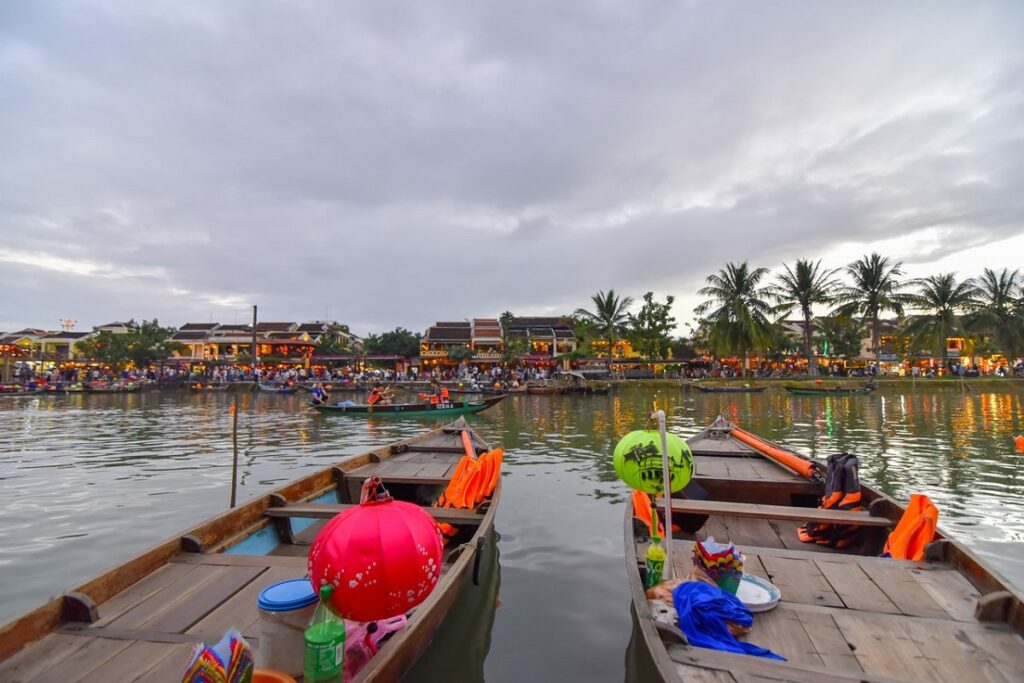
Table of content
- 1 An Introduction about Hoi An
- 2 What is Hoi An Famous for?
- 3 Location and How to Get to Hoi An
- 4 Get Around Hoi An: What is Best?
- 5 Brief History of Hoi An
- 6 Hoi An Weather by Month and Best Time to Visit
- 7 Hoi An Accommodation: Where to Stay in Hoi An?
- 8 Hoi An Tourist Attractions: What to See in Hoi An?
- 9 Hoi An Activities: Things to Do in Hoi An
- 10 Hoi An Nightlife: What to Do in Hoi An at Night?
- 11 Eating and Coffee in Hoi An
- 12 Hoi An Shopping: What to Buy in Hoi An?
- 13 All Guided Tours from Hoi An
- 14 Related Posts
- 15 Non Nuoc Beach: The Famous Beach of Da Nang
- 16 How to Get from Da Nang to My Son Sanctuary
- 17 Thieu Tri Tomb: The Peaceful Royal Tomb of Hue
- 18 Bach Ma National Park: Hiking, Trekking in Da Nang and Hoi An
- 19 Hoi An Wet Season: What to Do in Hoi An When It Rains?
- 20 Hue to Da Nang By Train: The Best Train Ride in Vietnam
- 21 Hue Royal Tombs: A Complete Guide and What is Best?
- 22 The Hue Abandoned Water Park (Thuy Tien Lake Waterpark)
- 23 Minh Mang Tomb Complete Visitor Guide
- 24 Tu Duc Tomb Complete Visitor Guide
- 25 Thanh Ha Terracotta Park
- 26 Vinwonders Nam Hoi An Theme Park (formerly Vinpearl Nam Hoi An)
- 27 Am Phu Cave Complete Travel Guide
- 28 Hoi An or Hue: Which is Better?
- 29 Asia Park and Sun Wheel in Da Nang (Sun World Da Nang Wonders)
- 30 The Official Hoi An Travel Guide (MUST READ)
- 31 The Hoi An Market (Hoi An Central Market) Complete Guide
- 32 Hoi An Memories Show: The Best of Hoi An Impression Theme Park
- 33 How to Get to Golden Bridge from Da Nang
- 34 Hoi An Bridge: Famous Bridges in Hoi An
- 35 Da Nang Food Specialties: What to Eat in Da Nang
- 36 How to Get From Hoi An to My Son Sanctuary
- 37 Hoi An’s Chinese Assembly Halls and Chinese Temples
- 38 Hoi An Walking Tours: Heritage, Foods, Photography & Locals
- 39 Hoi An Self Guided Walking Tour (Hoi An By Yourself)
- 40 How to Visit Golden Bridge Vietnam
- 41 Da Nang Shore Excursions: Guided Tours From Tien Sa Port
- 42 Unique Experiences in Hoi An and Why?
- 43 Han Market (Cho Han): Where to Shop in Da Nang?
- 44 An Bang Beach: A Guide to Hoi An’s Best Beach
- 45 Experiences in Hoi An: Get Insight Into Hoi An’s Local Culture
- 46 Da Nang Cathedral (Da Nang Pink Church)
- 47 Things to Do in Ba Na Hills Besides Golden Bridge
- 48 Hoi An Nightlife: What to Do in Hoi An At Night?
- 49 Hoi An Countryside: Villages, Rice Fields & Tours
- 50 How to Get to Golden Bridge From Hoi An
- 51 Hoi An Entrance Fee: Old Town, Golden Bridge, My Son, More
- 52 Hoi An Airport: Everything You Need to Know
- 53 Hoi An Lantern Boat Ride on Hoai River
- 54 Da Nang Half Day Tours
- 55 Hoi An Private Car and Driver
- 56 Da Nang Private Car and Driver
- 57 What to Do in Hoi An Ancient Town
- 58 Da Nang and Hoi An Itinerary for Visitors Staying Overnight in Hoi An
- 59 Hoi An 3 Day Itinerary: A Travel Plan for 3 Days in Hoi An
- 60 Hoi An Free Things to Do: Budget Travel in Hoi An Vietnam
- 61 Hoi An One Day Itinerary: A Travel Plan for One Day in Hoi An
- 62 Da Nang Things to Do: Guide to What to Do in Da Nang Vietnam
- 63 Da Nang Best Things to Do and Reasons
- 64 Hoi An Half-Day Tours: Guide to Half Day Trips From Hoi An
- 65 Hoi An Day Tours: A Guide to Best Day Trips From Hoi An
- 66 Hoi An Beach: A Guide to All Beaches in Hoi An Vietnam
- 67 Hoi An Food Specialties
- 68 How to Get From Hoi An to Da Nang
- 69 Hoi An Cheap Things to Do: All Solo Travelers Need to Know
- 70 Hoi An Best Things To Do: Recommendations from Local Experts
- 71 Hoi An Things to Do: All What Can You Do in Hoi An Vietnam
- 72 Hoi An Things Not to Miss: A Guide to Must Do in Hoi An
- 73 Hoi An or Da Nang: Which is Better?
- 74 Hoi An Pottery Village: A Guide to Thanh Ha Pottery Village
- 75 Hoi An Ancient Town Tour
- 76 Hoi An Old Town Ticket: Price, Sellers, Included Sites, More
- 77 My Son Sanctuary Tour
- 78 Hoi An Lanterns: Festival, Making Class, Where to Buy, More
- 79 Hoi An Best Area to Stay: Guide to Where to Stay in Hoi An
- 80 Hoi An Weather by Month: Guide to Hoi An Monthly Weather
- 81 Da Nang Best Area to Stay: Guide to Where to Stay in Da Nang
- 82 Da Nang Cave Tour: Best Underground Activities in Da Nang
- 83 Da Nang Best Time to Visit: Guide to Best Weather in Da Nang
- 84 Da Nang Weather by Month: Guide to Monthly Weather in Da Nang
- 85 What to Do in Da Nang At Night
- 86 Lang Co Vietnam Travel Guide
- 87 Hoi An River Cruise: Guide to The Best Boat Tour in Hoi An
- 88 What to Do in Da Nang for 3 Days
- 89 Hoi An Old Town Boats: Guide to Boat Rides in Hoi An Town
- 90 Hoi An 2 Day Itinerary: Traveler Guide to 2 Days in Hoi An
- 91 Cham Island Hoi An
- 92 Hoi An Basket Boat Ride
- 93 Hoi An Coconut Village: A Guide to Cam Thanh Coconut Village
- 94 My Khe Beach: A Complete Guide to Da Nang’s Best Beach
- 95 Thien Mu Pagoda: Guide to Hue’s Most Famous Buddhist Temple
- 96 Perfume River Cruise: Guide to Best Boat Tour in Hue Vietnam
- 97 Tomb of Khai Dinh: The Most Unique Royal Tomb of Hue
- 98 Da Nang Day Trips: Guide to Best Day Tours From Da Nang
- 99 Museums in Da Nang
- 100 Linh Ung Pagoda: Trio of Da Nang’s Holiest Mountain Temples
- 101 Da Nang Night Market: A Thing To Do in Da Nang at Night
- 102 Guide to Son Tra Mountain aka Monkey Mountain Vietnam
- 103 Ba Na Hills Tour
- 104 Hoi An Cham Temples: My Son Sanctuary & Quang Nam Temples
- 105 Da Nang Cable Car
- 106 How to Get from Da Nang Airport to Hoi An
- 107 Da Nang to Hoi An: Best Da Nang Airport Transfer and More
- 108 Hoi An Tour Guide: How to Find a Private Tour Guide in Hoi An
- 109 Hoi An Ancient Town Attractions
- 110 Hai Van Pass Da Nang: Map, Route, Weather, History, Tour
- 111 Hoi An Old Town Map
- 112 Tra Que Vegetable Village
- 113 Hoi An Lantern Festival
- 114 Hue Imperial City and Forbidden City
- 115 Featured Tours and Experiences
- 115.0.1 Golden Bridge and Ba Na Hills Night Tour
- 115.0.2 Golden Hands Bridge Tour In Sunrise or Sunset (1/2 Day)
- 115.0.3 Cam Kim Island Bicycle Tour From Hoi An
- 115.0.4 Cham Island Tour From Hoi An (Group Tour)
- 115.0.5 Cham Island Tour From Da Nang (Group Tour)
- 115.0.6 Hoi An Vegetarian Food Tour
- 115.0.7 Hoi An Evening Walking Food Tour Through Laneways
- 115.0.8 Private Hoi An Basket Boat Tour (Shuttle Bus, Bicycle, Bike)
- 115.0.9 Half-day Am Phu Cave Tour (Private)
- 115.0.10 Hoi An Countryside Tour (Bicycle, Car, Electric Shuttle)
- 115.0.11 Da Nang Tour Package From Singapore
- 115.0.12 Hoi An Evening Tour From Da Nang
- 115.0.13 Hoi An Walking Food Tour Through Laneways
- 115.0.14 My Son Sanctuary and Hoi An Old Town Tour with Thu Bon River Cruise
- 115.0.15 My Son Day Trip From Hoi An including Marble Mountains and Basket Boat
- 115.0.16 Half Day Hoi An City Tour With River Cruise
- 115.0.17 Son Tra Peninsula Tour with Marble Mountains (Private/Small Group)
- 115.0.18 Hue Day Trip From Hoi An with Hai Van Pass, River Cruise & Lunch
- 115.0.19 Hoi An Ancient Town and Countryside Tour (Bests of Hoi An Tour)
- 115.0.20 Hoi An Tour From Da Nang Airport (Private, Optional Lunch)
- 115.0.21 Hoi An Day Trip From Da Nang (Marble Mountains, Basket Boat, Old Town)
- 115.0.22 Da Nang City Tour From Airport (Private, Optional Lunch)
- 115.0.23 Hoi An City Tour with Lantern Class, Lantern Boat, Night Market & Local Food Sampling
- 115.0.24 Marble Mountains, Basket Boat Ride & Hoi An Old Town Walking Tour
- 115.0.25 Marble Mountains & Golden Bridge Day Tour with Buffet Lunch
- 115.0.26 Marble Mountains & Monkey Mountain Tour (Half-day, Private)
- 115.0.27 Private Golden Bridge Sunrise Tour (Half-day, Optional Lunch)
- 115.0.28 Hoi An Ancient Town & Golden Bridge Day Tour (Private/Small Group)
- 115.0.29 My Son Sanctuary & Golden Bridge Day Tour (Private/Small Group)
- 115.0.30 Private My Son Sanctuary Sunrise or Sunset Tour
- 115.0.31 Full Day Hoi An Ancient Town & Countryside Experience With Local
- 115.0.32 Full Day My Son Sanctuary & Hoi An Countryside Tour With Local
- 115.0.33 Full Day Hoi An Ancient Town & Coconut Village Experience
- 115.0.34 Son Tra Peninsula, Marble Mountains and Hoi An City Tour
- 115.0.35 Half-day Marble Mountains Tour from Da Nang or Hoi An
- 115.0.36 Da Nang Cave Tour (Half Day Underground Tour in Da Nang)
- 115.0.37 Hoi An Old Town & Lantern Making Class (Morning Tour, Half-day)
- 115.0.38 Full Day Bests of Da Nang & Hoi An Old Town Walking Tour
- 115.0.39 Full Day My Son Tour From Da Nang with Da Nang City Tour
- 115.0.40 My Son Sanctuary Tour From Hoi An or Da Nang With Local Guide
An Introduction about Hoi An
Hoi An (meaning “peaceful meeting place” in Vietnamese) is a well-known tourist destination in Vietnam. By a white-sandy coast and rivers, its centre is a colorful, charming old town that prospered from trading with foreign countries. This Unesco world heritage site comes to life in the evening while millions of lanterns are lit. Full moon night is most worthy to wait for. It’s spectacular thanks to the local traditional lantern festival and wishing candle lanterns on the river. All photographers love Hoi An.
Surrounding Hoi An’s ancient quarters, it is a peaceful countryside studded with small villages. Rice fields, mangroves, vegetable gardens and palm forests make it much more green. Some communities specialize in making pottery, coconut products or sleeping mat and in carving wood works.
Not far away from paddy fields, Hoi An has a quite long coastline that stretches until Monkey mountain in Da Nang. Here, beaches are fringed with crystal clear seawater and medium waves. Around the horizon, the Cham islands increase the beauty of Hoi An’s beaches.
Read also: Experiences in Hoi An

What is Hoi An Famous for?
Hoi An is famous for many things. The first one is its Old town that Unesco inscribed to be a world heritage site. The town has well-preserved houses, all feature yellow walls, tiled roofs and wooden furniture as a uniform. Blooming flowers, blue sky, green rivers, and colorful lanterns make it so pretty. Hoi An is loved by photographers and instagrammers worldwide.
Secondly, Hoi An becomes famous for its beauty (and atmosphere) at night. After it’s dark, the town is filled by uncountable lantern lights. And, visitors will see them most in the full moon when people celebrate their traditional Lantern festival On the river, boats and floating paper lanterns make seers once again fall in love.
Local food at Hoi An is what travelers love next. The cuisine is unsimilar to anywhere else in the country thanks to long-time exchange of cultures. The best known dishes include banh mi (people believe that local banh mi is the best in Vietnam), chicken rice, white rose dumplings, Mi quang noodle, Cao lau noodle or Pho noodle soup.
Shopping in Hoi An is a good experience too. Tailors in town are able to complete a suit within 24 hours, up to personal features and specifications. Plus, the price is really high, therefore travelers come to Hoi An for custom tailoring.
Read also: Lady Buddha in Da Nang

Location and How to Get to Hoi An
Where is Hoi An in Vietnam?
Hoi An is a provincial city of Quang Nam province, in the middle of Vietnam. It lies by the estuary of Thu Bon river, to the south of Da Nang city. This historical trading port is also close to Pacific ocean. From Hanoi or Ho Chi Minh city, the flight to Hoi An is 1,5hrs.
Flights to Hoi An
Travelers have to fly to Da Nang city and then have a transfer from Da Nang airport to Hoi An. From two main cities of Vietnam – Hanoi and Ho Chi Minh city, there are lots of non-stop flights in the day to choose from. All operating domestic airlines now provide them. From some famous tourist destinations, such as Da Lat, Can Tho or Ha Long, it’s possible to reach by air too. Browse How to Get to Da Nang for further information.
Today, direct flights from another country to Da Nang are available. Traveler lovers can book one from South Korea, Japan, China, Hong Kong, Thailand, Singapore, Cambodia, Malaysia or India.
Both domestic and international terminals are in the same ground (airport) that is within Da Nang city’s downtown.
Car and Taxi
Car is the most popular vehicle to get from Da Nang to Hoi An due to convenience and affordable cost. The price for a roundtrip ranges from 700,000 to 1,000,000 VND, depending on the length of the trip and size of the group. Travel time by private car or taxi from Da Nang to Hoi An may be up to 1 hour. Chat with us on whatsapp number +84968009827 to book.
Bus to Hoi An
By 2020, there was a public bus connecting Da Nang and Hoi An. It’s the cheapest way to get from a city to another. Now, it is not available anymore. Please follow up your website for updated information.
Motorbike
Many travelers don’t stay overnight in Hoi An, and instead, they choose a hotel in Da Nang. To visit Hoi An, they ride a motorbike. The distance between cities is some 30 kilometers, so the drive is from 45 to 60 minutes. The quickest way is the coastal road, namely Vo Nguyen Giap and Truong Sa in Da Nang, and then Lac Long Quan in Hoi An. Halfway, that is the Marble mountains.
From Hue, motorbike rental providers allow travelers to drop the bike in Hoi An (don’t have to ride back to Hue!) if self driving. The distance is 140 kilometers, including the Hai Van pass – Vietnam’s best coastal road. For those who would like to experience but worry about their own skills and safety, it’s also available to book a local rider.
Train
The nearest railway station to Hoi An is in Da Nang. So, travelers can get a train from other cities to the Da Nang train station, and then take another vehicle to Hoi An. The most popular choice is going from Hue, Ha Noi or Quy Nhon. Read How to get Da Nang from Hue by train for more details. During the daytime, the passengers will enjoy the breath-taking view of the Hai Van pass.

Get Around Hoi An: What is Best?
Walking
Once again, we have to mention that Hoi An is a small city. Travelers absolutely can explore it by foot if book a hotel in the Minh An, Cam Pho and Son Phong areas. Within the Old town, pedestrian hours are daily from 9 to 11:30 am, and from 3 to 9:30 pm. The nearest beach – An Bang is only 3 kilometers away from here. Many people choose to walk there (rice fields, rivers, water buffalos, and scenic spots on the way).
Taxi
Getting around Hoi An by taxi is fairly easy. In the surroundings of Hoi An’s walking street (in Old town), there are many taxi cars and drivers to choose from. The cost is metered, around 15,000 VND for one kilometer. If stay in a hotel tucked away in small roads or laneways, let’s walk to the closest main road to hail. People in the reception can help to call one also. Passengers will pay by cash.
Read also: Hoi An Private Car and Driver
Shuttle Bus
Shuttle buses run by electricity are new to Hoi An. Local authorities aim to reduce traffic congestion in town, especially in the evening and air pollution. The experience on a shuttle bus is more interesting than cars. The cost depends on the length of the drive, and number of passengers. If the group is bigger than 5 and the distance is smaller than 2 kilometers, the price is 10,000 VND per person. Small kids and toddles are free of charge. It’s exactly how much visitors pay when they move within Hoi An’s downtown. For further places, such as beaches or the coconut village, the price is higher, but not more than 40,000 VND per person. There are 2 simple ways to have this vehicle: hailing in main streets or coming to car parks.
Bicycle
Hoi An is small enough to cycle around. Many hotels provide free bicycles for the guests (come first, serve first, no reservation). If not available for free, the rental is really cheap. It’s around 1 USD for one day full. No doubt, the cheapest way to get around. Travelers can ride to the beaches, rice fields, Cam Thanh coconut village or Cam Kim island.
Anytime of the day, it’s possible to tour the Hoi An ancient town by bicycle. This Unesco heritage is in the list of the towns that are most friendly to bicycles worldwide. Late afternoon onwards, tourists coming from Da Nang visit the town and make it full of pedestrians. Therefore, riding a bicycle during that time is a little bit difficult.
Motorcycle
Riding a motorcycle is a faster way to get somewhere than a bicycle. Rental price is really cheap, between 100,000 and 200,000 VND for one full day or 24 hours. Helmet (or maps) is provided. Gasoline cost fluctuates around 1 USD/1 littler. So, the motorbike is amongst the cheapest vehicles to get around Hoi An.
Note: Vietnam follows a right-hand traffic system. If you drive to the left in your country, you should consider carefully.
Inside the Hoi An old town heritage, except for walking hours (9 to 11:30 am and 3 to 9:30 pm), it’s possible to tour around it by bike. If just like to get there and then walk, the parking fee is from 5,000 to 10,000 VND. The latest service is up to 10 pm.
To go to the beach or discover the countryside, travelers can save their time (and even money) when riding a scooter. It’s easy and safe, but the riders need to be careful and pay attention to avoid dangerous situations. Further in distance, My Son sanctuary, the Marble mountains and Hai Van pass are popular attractions. The mountain pass requires good driving skills and confidence because it’s winding, featuring hairpin-like turns, twists and dense fog.
The Best Way to Get Around Hoi An
The best way to get around Hoi An depends on different situations. So, this is our thoughts:
– Hoi An old town: walking
– Hoi An’s countryside: bicycle or motorcycle
– Solo travelers: bicycle or motorcycle
– Families or a group of friends: car, taxi, shuttle bus

Brief History of Hoi An
Hoi An was known as a busy international trading town in Vietnam and Southeast Asia from 15th to 19th centuries. During that period, merchants and their sailing boats docked here, to exchange different products (spices, ceramics, silk, etc). They came from Japan, China, and Europe. Hoi An got its European name “Faifoo”. Heritage left by these nationalities are around its old town today.
Late 19th century was the turning point in Hoi An’s history. Geological activities in the river estuary didn’t allow boats to easily access the town. Vietnamese kings also prohibited westerner’s boats to get there directly (have to stop at Da Nang before). They got worried about military power and religious missionaries from the west. For that reason, commerce in Hoi An declined. Since then, Da Nang has been replacing its role as the most important center of commerce in the area (until now).
During the colonial time, 19th and 20th centuries, French based in Hoi An and designed it as a provincial capital. Influences from French people are still seen today.
In 1999, Hoi An was added to the Unesco world heritage site list, together with My Son sanctuary. Since then, it has been popular with both local and foreign tourists. At the present, this little town draws millions of visitors although its population is only 120,000 people.
Read also: Da Nang Museum of Cham Sculpture
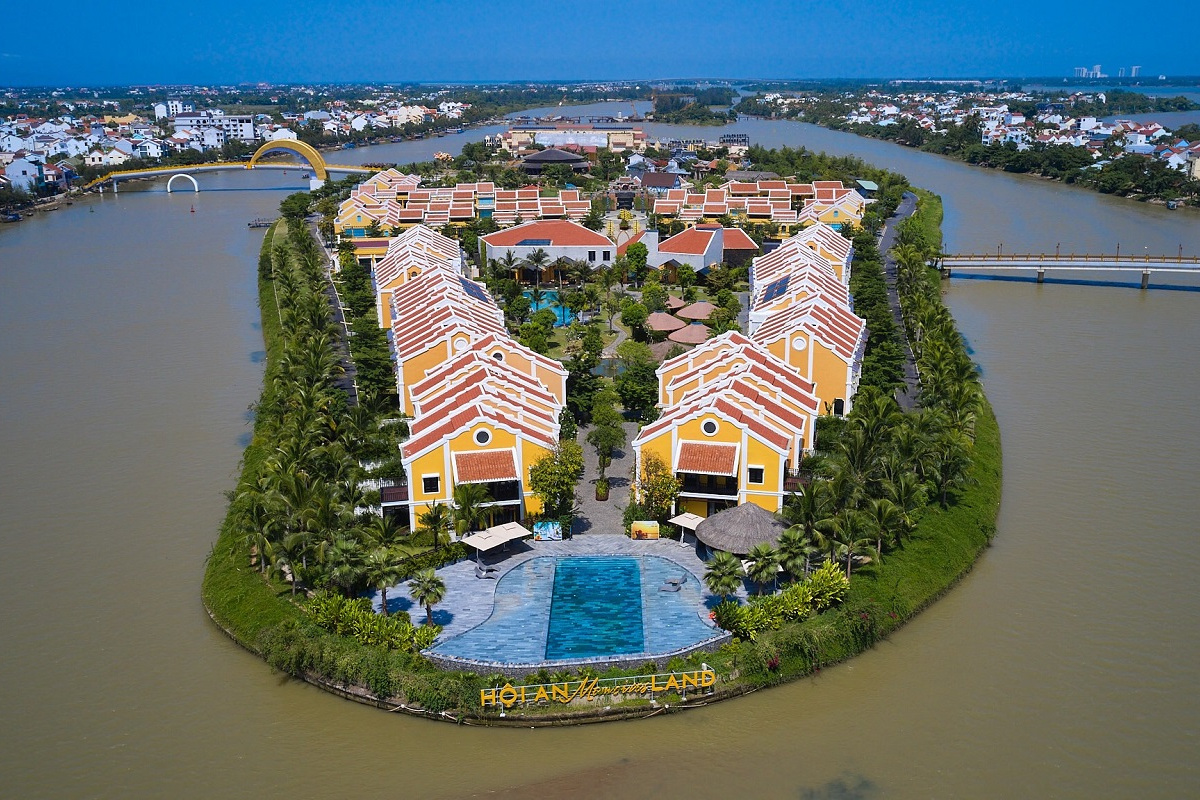
Hoi An Weather by Month and Best Time to Visit
Monthly Weather in Hoi An
Weather is important when travelers plan to visit somewhere. In Hoi An, there’re two seasons in the year: the dry season, from February to August and the wet season (rainy season), from September to January. It’s dry, hot in the dry season, and it rains frequently in the other season. See details of the weather each month in https://centralvietnamguide.com/hoi-an-weather-by-month/.
When Are the Best Times to Visit Hoi An?
The best time to visit Hoi An in Vietnam is January, mid-February to mid-April, mid-May to September. During these periods, it’s sunny, perfect for outdoor activities and going to the beach. From May to August, the temperature reaches its peak. Therefore for those who don’t like strong heat, earlier or later times will be more nice and comfortable. From October to December, although it’s cooler, heavy rains and typhoons make people not really enjoyable. However, sunny days are still available and that’s so perfect to explore places outside.
Read also: Monthly Weather in Da Nang

Hoi An Accommodation: Where to Stay in Hoi An?
How Many Days Do You Need in Hoi An?
Three full days are perfect to visit Hoi An. For more relaxation, a longer stay is needed. Within 3 days, travelers have time enough to see major landmarks of the area, such as the Ancient town, the Marble mountains or My Son sanctuary. Read 3 days in Hoi An itinerary to arrange them properly. The town is not really big, so joining other activities or tours is also convenient (for pick up, drop off). If planning to have a custom-made suit (or more), it’s possible too and don’t have to see any tailor immediately after arriving in town.
Text us in whatsapp number +84968009827 for free assistance to make the best travel itinerary for you.
Areas to Stay in Hoi An
If prefer somewhere that it’s near Hoi An old town, travelers should choose one in Minh An, Cam Pho, Cam Pho and the Tiger market areas. The distance is within 1,5 kilometers. No doubt that it’s great to walk (of course, Hoi An is flat). Restaurants, coffee shops, bars, shopping places, tailors, and convenient stores are all around.
Beaches are the favourite for many travelers. In the Cua Dai beach area, there are a handful of all-inclusive beachside resorts. Shuttle bus is available there to get to the Old town and back every single day. Inside quiet laneways of An Bang beach area, homestays are run by local families, with a pool. For sure, the beach is just a short walk away.
More information in https://centralvietnamguide.com/where-to-stay-in-hoi-an/.

Hoi An Tourist Attractions: What to See in Hoi An?
Hoi An Ancient Town World Heritage
Hoi An ancient town is the heart of Hoi An. It’s home to more than 1,100 traditional style houses, a Japanese bridge, Chinese temples, a living market, and a quay where boats dock. From 15th to 19th centuries, foreign merchants came here to trade, making it bustling and wealthy. Nowadays, this complex is a Unesco world heritage site, inscribed in 1999. Visitors can buy Hoi An old town ticket to sightsee 4 buildings and watch a show at the Traditional Performance House.
In the evening, locals light lanterns and by that, it’s filled by colorful lights. Especially, in full moon, they also release paper lanterns lit by candle, down the river and make wishes. Many tourists believe that full moon night is a must-know experience. Read everything else in https://centralvietnamguide.com/hoi-an-old-town/
Beaches in Hoi An
Hoi An owns a 6-kilometers-long coastline, with several beautiful white sandy beaches. During sunny months, these places are full of people who go swimming, go surfing, play water sports, meditate, sun bath, or simply cool off. It’s free to visit every beach in Hoi An. For eating and drinking, restaurants and bars line the beachfront, serving delicious seafood dishes. Islands of the Cham archipelago and Da Nang’s hills together just make the scenery more wonderful. Further information in https://centralvietnamguide.com/hoi-an-beach/.
Two famous beaches in Hoi An are An Bang and Cua Dai. Now, An Bang beach is busier because it’s damaged by erosion. That’s why people say it’s best to go, especially for families with kids.
My Son Sanctuary
Located in the jungle, 40 kilometers away from Hoi An, My Son sanctuary is a popular place to visit for day trippers. It has about well-preserved 20 Hindu temples which survived from harsh climate and bombings in the Vietnam war. These brick buildings were constructed from 4th to 13rd centuries by request of Cham kings, for worship of Shiva god. At several times of the day, at the Public Stage, traditional performances are available to watch (it’s free!). See full details in My Son sanctuary travel guide.
The Marble Mountains
Only a 30 minutes drive from Hoi An, the Marble mountains is also very popular to travelers. It’s a group of five striking marble hills that rise up suddenly from the surroundings, between a river and the sea. Thuy Son (literally “the Water mountain”) is the only mountain where people can climb to the top. Here, there are many stunning sights to visit, including Buddhist temples, magnificent caves, viewpoints, and peaks with a panoramic view. Hiking shoes is required. See further information in the Marble mountains travel guide.
The Golden Hands Bridge in Ba Na Hills
Built in 2018, the Golden Bridge of Ba Na Hills today is well known all over the world. It’s a 160-meters-long pedestrian bridge, with golden handrails and a pair of massive stone-like hands. From here, 1,414 meters above the sea level, visitors enjoy a panoramic view. Read Golden Bridge travel guide to get more details and How to get to Golden Bridge from Hoi An to find the best transport for you. The best time to visit is early morning when the crowds and the heat don’t come yet. A private Golden Bridge sunrise tour is the choice for smart travelers.
Hoi An’s Countryside and Villages
Surrounding the Old town, Hoi An countryside is lovely and tranquil. In addition to rice fields, vegetable gardens and animal farms, there are 4 villages interesting to visit. Near An Bang beach, Tra Que vegetable village is famous for its herbs. Some local food specialties require them as a must-have ingredient. Also 3 kilometers away, Thanh Ha pottery village produced high-quality products for exportation. Today, the artisans teach visitors how to make pottery. Kim Bong carpentry village is least known by tourists because it’s located on an island. Cam Thanh coconut village is furthest, 10 mins drive from the town’s centre. Locals here use basket boats to show visitors the water coconut forest and countryside entertainments.
Opposite to the Old town by the Thu Bon river, Cam Kim island is the host for cycling tours thanks to its peacefulness. Lifestyle of the islanders is still unchanged, and their traditional handicrafts are still well kept.

Hoi An Activities: Things to Do in Hoi An
Main article: Things to Do in Hoi An
Custom Tailors in Hoi An
History of tailoring and fabric silk trading in Hoi An is long. Today, there are so many tailors and tailor shops in town where people can make clothings at their own measurements. Shoppers have a wide range of material, color and price to choose from. They can have a look at styles on the catalogues but also show favourite ones by phone, to let local tailors know. 24hrs service is available. See more information in our guide to tailoring in Hoi An.
Basket Boat Ride in Coconut Forest
Round basket boats are unique to central Vietnam. It’s made of bamboo, and used by locals to get around the water coconut forest of Hoi An. During the ride, visitors have the chance to be close to nature, and join fun-filled entertainments, such as the “spinning boat ride”. To experience, it’s needed to come to the Cam Thanh village, 10 mins drive from the Old town. See further details in https://centralvietnamguide.com/hoi-an-basket-boat-ride/.
Go Diving and Snorkeling the Cham Islands
The Cham islands is known for its richness of underwater life and its great natural scenery. It’s under the protection of the Vietnam government as a marine park and Unesco as a world biosphere reserve. Here, visitors have the chance to explore a fantabulous world under the sea while go snorkeling or scuba diving. Daily tours include an experience by snorkel, but to see pristine coral reefs, travelers must book a tour specializing in diving. Staying overnight is required if many spots in the itinerary. Please read our Cham islands travel guide to know everything else.
Thu Bon River Cruise on Sunset
Hoi An ancient town sits on the north bank of the Thu Bon river, the largest river in the province. In the sunset, this river becomes such awe-inspiring. Along the quay – Bach Dang St, visitors can see cruises and then travel (downstream or upstream) to enjoy the beautiful scenery, peacefulness, breeze and photography. When the darkness falls, people light up the lanterns in waterfronts, making the town really lovely. One of the best spots to see it is from the river cruise. See further information in https://centralvietnamguide.com/hoi-an-river-cruise/.
Learn How to Cook Vietnamese Foods
Participating in a cooking class is fun. Visitors will follow local people to visit the market, shop like a local and then bring ingredients to the school for cooking. The chief shows the learners different Vietnamese dishes. For example, spring rolls or fried spring rolls, banh xeo pancakes, pho noodle soup, and traditional salads. If would like to know deeper local cuisine and also cooking skills, this is an activity that is not to miss. The class time is usually a couple of hours. Read more in our complete guide to Hoi An’s cooking classes.
Instagrammable Spots in Hoi An
Absolutely, Hoi An is a photogenic, instagrammable town. Both daytime and nighttime, visitors will find good spots to take pictures. When it’s still bright, quarters with yellow-wall houses, blooming bougainvillea flowers, reddish temples and vintage café are stunning. It’s really colorful. In the market, the variety of local procedures and lively local life (vendors, shoulder pole ladies, etc) are also great to have a photo with. At night, for sure, lantern lights together make a perfect backdrop. No photography lovers miss Hoi An when they come to Vietnam.

Hoi An Nightlife: What to Do in Hoi An at Night?
Main article: What to Do in Hoi An at Night?
Full Moon Lantern Festival in Hoi An
Full moon lantern festival is unique to Hoi An. It takes place every single month on the 14th day in the Vietnamese lunar calendar (now people can check online). In the fairly moonlight, so many lanterns are hung up and lit by locals, giving the town a great beauty and a great atmosphere. By the river, they light up paper lanterns by candle, and then release, to make wishes. This night is a thing not to miss. Read full details in Hoi An lantern festival travel guide.
The Hoi An Night Market
This night market includes around 150 stalls selling lanterns, souvenirs and foods, along Nguyen Hoang St, on the opposite side to the Old town. It’s the largest and busiest. See all you need to know about it in https://centralvietnamguide.com/hoi-an-night-market/.
Hoi An Memories Show and Hoi An Impression Theme Park
The Hoi An memories show is the largest outdoor visual art performance in Vietnam. Debuted in 2018, today it becomes a must see in Hoi An at night. This spectacular show tells spectators the history and culture of the town exceptionally. The production is really stunning, giving a great time (experience). Please browse https://centralvietnamguide.com/hoi-an-memories-show/ for full details. Before and after the Hoi An memories show, travelers can visit around the Hoi An impression theme park.
Lantern Boat Ride on Hoai River
Hoai river runs alongside Hoi An Old town, to the south. At night time, visitors can cruise it by boat and drop paper lanterns down the water, to make wishes. This leisure ride allows the passengers to enjoy the beauty of the town and photograph it. The price is 150,000 VND (1 to 3 people), and 200,000 VND (4 to 5 people), for 20 minutes. See full details in https://centralvietnamguide.com/hoi-an-lantern-boat-ride/.

Eating and Coffee in Hoi An
Hoi An Food Specialties
Hoi An cuisine is unique in the world thanks to cultural exchanges in the past. Travelers should try bánh mì – sandwich filled by pate, raw vegetables, herbs and meats, cao lầu – the most special local noodles, mì quảng – another famous noodle dish, bánh bao bánh vạc – white rose dumplings, more. See all dishes as you can see in Hoi An in https://centralvietnamguide.com/hoi-an-food-specialties/.
Note: Cao lau is seen as the signature food of Hoi An. Nowhere else outside its old centre, people can try it.
Vietnamese restaurants in the Old town serve at least several local food specialties. At some venues, it’s possible to see almost everything on the menu. Thanks to that, travelers just need to visit one place, and then can taste many dishes. We recommend coming to restaurants where the food is amongst best sellers all over Hoi An. For example, the couple of stores selling banh mi sandwiches: Madam Khanh and Banh Mi Phuong.
Street Foods in Hoi An
Hoi An is also known for street foods that are many and tasty. In Nguyen Hoang night market, visitors will see vendors and they serve a lot of options (even for vegetarians too). Bánh tráng nướng – grilled rice paper with toppings and sauces, bánh ướt thịt nướng – grilled pork skewers, rolled with rice papers and vegetables or banana pancakes are deserving to try. Around sunset, in old streets, rice cakes, clear dumplings, mango cake (no mango!) and other snacks are also sold.
Coffee and Coffee Shops in Hoi An
Vietnam is the 2nd largest coffee producer globally. Inside the Hoi An ancient town, there are many coffee shops where tourists can try Vietnamese traditional coffees and western styled ones, the new arrivals. Beans are bought from farmers living in the Highlands, and then roasted in the shop (that’s why some places are named “roasteries”). Rooftop cafes also provide an incredible view that is ideal for Instagrammable pictures.
Read also: Hoi An Central Market Travel Guide

Hoi An Shopping: What to Buy in Hoi An?
Main article: Hoi An Shopping Guide
Travelers can stroll around the Ancient town, markets, night markets and other shops in the centre to buy favourite things. The lantern is one of the best reminders about Hoi An. Size, shape, color, and pattern are diverse here. Luckily, local lanterns are foldable, so packing them into the luggages is free of difficulty. In addition, handicraft products are what travelers are interested in Hoi An too. The material is varied (wood, bamboo, ceramic, clay, leather, etc). That’s why shoppers have so many choices to select and bring home then.
Tailor-made clothings is loved by many travelers. They can find good-quality fabric and skillful tailors to make it, with a cheaper price than their home country. Within 24hrs, it’s possible to go for the first fitting to the suit or dress or any other garments. Shipping abroad and card payment are available at most tailors in town.
For those who love cooking, there are plenty of spices, seeds, seasonings and dried fruits to buy. Make sure that your country accepts.
All Guided Tours from Hoi An
Main article: Hoi An Day Tours – Best Day Trips from Hoi An
Hoi An Old Town Walking Tour
The Old town (Unesco world heritage site) is a must-visit attraction in Hoi An. To get insight into its history, explore local culture and photograph, walking is the best way. That’s why many travelers join a walking tour, with a local guide.
We recommend having a morning tour when the sun is not high yet, or an afternoon tour when the temperature goes down. A lantern making class is optional. From Da Nang, an evening tour is helpful because travelers can spend longer in town, experience further and have more memories (and pictures!). Here, local food tasting, lantern boat ride, night market or the Hoi An memories show is selected by yourself.
Golden Hands Bridge Tour from Hoi An
Golden Hands Bridge tour from Hoi An is one of the most popular day trips. We highly recommend starting it early in the morning (around 6, 7 am) to avoid the heat and crowds. Please see details in https://centralvietnamguide.com/tour/golden-bridge-sunrise-tour/. “Sunset tour” is available as well, with the same price. See its itinerary in https://centralvietnamguide.com/tour/golden-hands-bridge-tour/. However, due to weather at Ba Na Hills where the bridge’s located, we suggest the best option on the day before. By the way, all entrance fee and cable car are included in the tours.
My Son Sanctuary Tour from Hoi An
A visit to My Son sanctuary is a perfect half-day tour from Hoi An. It’s not really far away, and definitely worth sightseeing (not only about its world heritage site title). To avoid the heat and crowds, many travelers like getting there early in the morning, around 5 am. This sunrise tour also includes a local guide as normal. Later in the day, the sunset tour has the same purpose, but not for early birds. Joining a “classic tour” that departs at 8 or 9 am, it’s possible to witness full traditional performances at My Son’s public theatre.
Cycling Tours in Hoi An Countryside
Over such a long history, fortunately, Hoi An still keeps its countryside peaceful. We highly recommend a bicycle tour to discover this wonderful rural land. Following a local guide, travelers will cycle through villages on backroads where the traffic is low (or no traffic) and visit local families to know their life. Some activities and experiences are in the itinerary alike, such as basket boat ride in palm forest, making rice papers, etc. Read more information in https://centralvietnamguide.com/hoi-an-cycling-tours.
Hoi An Food Tours
Roaming around and tasting delicious local foods (especially street foods) is amongst the most interesting cultural experiences in Hoi An. Travelers can choose a food tour run by foodies in town, with a bicycle, motorcycle or by foot. Within some hours, they will show different dishes and tell stories (including Hoi An’s specialties, such as banh mi sandwich). It’s a great time to get insight into local culinary culture and ways of life. Of course, there’re many opportunities to take fun pictures. Late afternoon and evening is the best time. Browse our Hoi An evening walking food tour if you’re interested. For vegans and vegetarians, we have Hoi An vegetarian food tour.

Related Posts
Non Nuoc Beach: The Famous Beach of Da Nang
Besides the Golden hands bridge – a global hit, Da Nang city also has beautiful beaches. If looking for somewhere great to stay and have a slow holiday, Non Nuoc
How to Get from Da Nang to My Son Sanctuary
Known as ‘the Angkor Wat of Vietnam’, My Son sanctuary boasts of its sophisticated temples dating back from 4th century. Sadly, in 14th century, it’s abandoned in the forests. Today,
Thieu Tri Tomb: The Peaceful Royal Tomb of Hue
Thieu Tri emperor tomb is an unpopular place to visit in Hue. From the city centre, it’s closer than Khai Dinh tomb, Minh Mang tomb and Gia Long tomb, and
Bach Ma National Park: Hiking, Trekking in Da Nang and Hoi An
Two best places for trekking and hiking in and near Da Nang are Son Tra mountain (peninsula) and Bach Ma national park. Which one is better is actually personal because these
Hoi An Wet Season: What to Do in Hoi An When It Rains?
No beach, no pool, no outdoor adventures? What to do in Hoi An when it rains? This is a very popular question from travelers who come to Vietnam in the
Hue to Da Nang By Train: The Best Train Ride in Vietnam
Like Hanoi to Sapa, many travelers choose to get from Hue to Da Nang by train. Not just a cheap deal, the experience on this ride is definitely stunning and
Hue Royal Tombs: A Complete Guide and What is Best?
The Nguyen dynasty existed 143 years, from 1802 to 1945 with 13 emperors, but only 7 of them had their own mausoleum. On the map, all of these buildings are
The Hue Abandoned Water Park (Thuy Tien Lake Waterpark)
Recently, the Abandoned water park in Hue is known by travelers worldwide thanks to social media and online magazines, just like the Golden hands bridge in Da Nang. It was
Minh Mang Tomb Complete Visitor Guide
Minh Mang is the 2nd ruler of the Nguyen dynasty, the king of Vietnam from 1820 to 1840. His contributions to the country can’t be counted, including the largest territory Vietnamese
Tu Duc Tomb Complete Visitor Guide
Tomb of Tu Duc emperor is one of three most visited royal mausoleums in Hue. Two others are Minh Mang tomb – the tomb of Tu Duc king’s grandfather and
Thanh Ha Terracotta Park
Between 15th and 19th centuries, Hoi An was one of major stopovers for sailing merchants to trade in Southeast Asia. Meanwhile, craftspeople in its Thanh Ha village produce high-quality pottery
Vinwonders Nam Hoi An Theme Park (formerly Vinpearl Nam Hoi An)
In addition to historical and cultural attractions, nowadays Hoi An also has a couple of amusement parks to entertain. Definitely, they’re ideal places for families with children and groups of
Am Phu Cave Complete Travel Guide
Although in the Marble mountains – the most visited attraction in Da Nang, travelers often miss Am Phu cave. One of reasons is that it’s mentioned much online and not
Hoi An or Hue: Which is Better?
Both Hoi An and Hue cities are in the middle of Vietnam, and they’re not far from each other (about 130 km). Therefore, for those who travel from north to
Asia Park and Sun Wheel in Da Nang (Sun World Da Nang Wonders)
Have you ever seen the wheel of Da Nang? That is the Sun Wheel. It’s a part of greater Asia Park – an amusement park with a heap of fun
The Official Hoi An Travel Guide (MUST READ)
By the estuary of Thu Bon river, Hoi An is one of the best places to visit in Vietnam. This Vietnamese town is a package for travelers – a pretty
The Hoi An Market (Hoi An Central Market) Complete Guide
The Hoi An Market is the first market in Hoi An ever. Over centuries, it’s still the largest market in town although the town has a much bigger size than
Hoi An Memories Show: The Best of Hoi An Impression Theme Park
The Hoi An Memories Show is a famous series of outdoor performances in Hoi An at the present time. Thanks to its exceptional production and great cultural stories, it becomes
How to Get to Golden Bridge from Da Nang
The Golden Bridge (aka the Golden Hands Bridge) in Da Nang is a must visit attraction in Vietnam today. Many foreign travelers come to the city, just because they love
Hoi An Bridge: Famous Bridges in Hoi An
Hoi An has many bridges because it’s located at the confluence of 3 rivers: Thu Bon river, De Vong river and Truong Giang “Long river”. The distributaries of these rivers
Da Nang Food Specialties: What to Eat in Da Nang
Da Nang is known as a food capital of central Vietnam. This city boasts many yummy dishes, prepared by distinctive recipes and some of them are famous all over the
How to Get From Hoi An to My Son Sanctuary
My Son sanctuary is one of the most popular places to visit for tourists staying overnight in Hoi An, especially those who spend many days there. It’s known for a
Hoi An’s Chinese Assembly Halls and Chinese Temples
Chinese people migrated to Hoi An from the early 17th century. Today, Chinese communities as a whole are the second most important piece to form the town’s unique culture. The foremost
Hoi An Walking Tours: Heritage, Foods, Photography & Locals
Strolling around heritage quarters with a local guide is the activity that so many travelers love to do in Hoi An. It enriches their time in this lovely town. Firstly,
Hoi An Self Guided Walking Tour (Hoi An By Yourself)
Hoi An old town is friendly for pedestrians, especially during the time that motorized vehicles (scooters, cars, etc) are prohibited to move around its heritage quarters. That is safe for
How to Visit Golden Bridge Vietnam
The Golden Hand Bridge of Ba Na hills today is a dream place to visit for many travelers. Since it opened in June 2018, millions of people have set their
Da Nang Shore Excursions: Guided Tours From Tien Sa Port
Da Nang Vietnam today is one of stopovers for many cruises that travel from continent to continent, from country to country. It owns an ideal seaport to moor and it
Unique Experiences in Hoi An and Why?
Today, travelers seek more experiences in the destination they go to. They want to have a deeper understanding about the culture of local people and interact with them. No other
Han Market (Cho Han): Where to Shop in Da Nang?
In the heart of Da Nang, the Han market is a popular place for visitors to buy something to bring home due to the diversity of merchandise. Back to history,
An Bang Beach: A Guide to Hoi An’s Best Beach
An Bang beach now becomes a popular tourist attraction in Hoi An. It may be the best known and most convenient to reach from the town’s centre. Not only tourists,
Experiences in Hoi An: Get Insight Into Hoi An’s Local Culture
As the most unique Vietnamese town, Hoi An is definitely worth visiting. Here, visitors have many things to do and experiences for their holiday time. Everyone knows that it has
Da Nang Cathedral (Da Nang Pink Church)
Da Nang became a French protectorate on 3rd October 1888, under the name “Tourane”. By the Han river, the colonists designed a grid of streets with public buildings, a city hall,
Things to Do in Ba Na Hills Besides Golden Bridge
According to local authorities, 50% of visitors coming to Da Nang and Hoi An visit the Ba Na hills. In other words, that is nearly 10 millions of people. This
Hoi An Nightlife: What to Do in Hoi An At Night?
After dark, Hoi An becomes exceptionally spectacular. If planning to stay overnight or visiting this ancient heritage town, at least travelers know that it’s “decorated” by so many colorful lanterns.
Hoi An Countryside: Villages, Rice Fields & Tours
By the coast, Hoi An is at the confluence of 3 rivers: Thu Bon river, Truong Giang river and De Vong river. This economically strategic location has supported trading activities
How to Get to Golden Bridge From Hoi An
There are many travelers visiting the Golden bridge from Hoi An. Both the bridge and the town today are must-see places in the region, so staying overnight in the town
Hoi An Entrance Fee: Old Town, Golden Bridge, My Son, More
Are you planning to visit Hoi An? And you don’t know how much cash you need to prepare for visiting places? This article lists tourist attractions in Hoi An and
Hoi An Airport: Everything You Need to Know
Hoi An is a famous tourist city in Vietnam. It’s 800 kilometers away from Hanoi, the capital of Vietnam and nearly 1,000 kilometers from Ho Chi Minh city, the biggest
Hoi An Lantern Boat Ride on Hoai River
A lantern boat ride is a thing to do that visitors must do today in Hoi An. For many centuries, locals have taken it on the Hoai river by the
Da Nang Half Day Tours
In addition to day trips, travelers have many options of half-day tours in Da Nang to choose from. Not to spend a full day at different places, maybe far from
Hoi An Private Car and Driver
Hoi An is one of the most popular tourist destinations in Vietnam. In the busiest year, it attracts about 9 millions visitors who come to enjoy its charming beauty, rich
Da Nang Private Car and Driver
Your next holiday destination is Da Nang? You prefer to travel by yourself? Hiring a private car is one of the best options for you to explore with freedom, flexibility
What to Do in Hoi An Ancient Town
Hoi An Ancient Town is a must see, not only thanks to its world heritage title, but also to its vintage urban landscape, lots of attractions and activities. In the
Da Nang and Hoi An Itinerary for Visitors Staying Overnight in Hoi An
Da Nang and Hoi An are twin cities in the heart of Central Vietnam. Both are popular tourist destinations for either domestic or international visitors, and share many similarities. Due
Hoi An 3 Day Itinerary: A Travel Plan for 3 Days in Hoi An
3 days are a perfect duration to stay overnight in Hoi An and explore captivating places in and around it. Especially for those who travel from city to city or
Hoi An Free Things to Do: Budget Travel in Hoi An Vietnam
Travelers should know free things to do in Hoi An, to save the budget for this wonderful city and by that, can stay longer to explore. From old town, countryside
Hoi An One Day Itinerary: A Travel Plan for One Day in Hoi An
From a backwater town in the 1990s, Hoi An today is one of leading tourist destinations across Vietnam. In a recent year, it attracted 8,5 millions of overnight visitors and
Da Nang Things to Do: Guide to What to Do in Da Nang Vietnam
Unquestionably, Da Nang deserves a holiday trip from all types of traveller. Firstly, due to the weather. It has a longer sunny time than the north but less hot than
Da Nang Best Things to Do and Reasons
Da Nang is the largest tourist center in Central Vietnam. It owns fascinating natural and cultural places that attract both Vietnamese and foreigners. In the busiest year, this city of
Hoi An Half-Day Tours: Guide to Half Day Trips From Hoi An
Top attractions near Hoi An require a couple of hours or half a day, to get there and visit around. The reason is that all have many things to see,
Hoi An Day Tours: A Guide to Best Day Trips From Hoi An
Near Hoi An, there are many fantastic places making travelers can’t stay in the room and have to go out to explore. Appeal Golden bridge – the new world wonder,
Hoi An Beach: A Guide to All Beaches in Hoi An Vietnam
Not only an old town, Hoi An has beaches as well! That are sandy, edged by tropical water and lined by palm forests. Travelers don’t need to wait or move
Hoi An Food Specialties
Hoi An is a melting pot where people from different parts of Vietnam and countries in the world have gathered and exchanged their cultures. As a result, this town has
How to Get From Hoi An to Da Nang
Da Nang is the neighbouring city of Hoi An. It's the capital of Central Vietnam and has the most important (busiest) transport hubs of the region, such as airport, train
Hoi An Cheap Things to Do: All Solo Travelers Need to Know
Knowing free and cheap things to do in the city where travelers are going to visit, is helpful. First of all, they can save and, thanks to that, can stretch
Hoi An Best Things To Do: Recommendations from Local Experts
It is no coincidence that Hoi An is in the list of must-visit places once in the lifetime of many travelers. Located by a river, it’s borned to welcome people
Hoi An Things to Do: All What Can You Do in Hoi An Vietnam
Hoi An is in the bucket list of most travellers who plan to visit the Central part of Vietnam. It’s a lovely old and small town located downstream of a
Hoi An Things Not to Miss: A Guide to Must Do in Hoi An
In fact, there are so many things to do in Hoi An, one of the 10 best cities in Asia by Travel + Leisure in 2021. It has a lantern-filled
Hoi An or Da Nang: Which is Better?
Da Nang and Hoi An are located in Central Vietnam, with a distance of roughly 30 km. To the north, Da Nang is the capital city of the region, with
Hoi An Pottery Village: A Guide to Thanh Ha Pottery Village
Hoi An used to be a bustling, prosperous trade port during past centuries, before its role was replaced by Da Nang. Merchants from many countries on different continents came here
Hoi An Ancient Town Tour
Hoi An Ancient Town is a Unesco world heritage site by the mouth of the Thu Bon River. It has grid-plan streets filled by silk lanterns and bougainvillea flowers that
Hoi An Old Town Ticket: Price, Sellers, Included Sites, More
As an attraction including attractions, Hoi An Old Town requires an entrance ticket to tourists who come from other parts of Vietnam and the world. It raises funds for preservation of
My Son Sanctuary Tour
My Son Sanctuary is a Unesco world heritage site, attracting 450,000 visitors in recent years. It’s the best remains left by the fallen Champa Kingdom which ruled a part of
Hoi An Lanterns: Festival, Making Class, Where to Buy, More
Lanterns are the signature of Hoi An Old Town, the 3rd Unesco world heritage site in Vietnam. Especially at night, these traditional handicraft objects are lit up and make the town
Hoi An Best Area to Stay: Guide to Where to Stay in Hoi An
In the busiest year, nearly 5,5 millions travellers decided to stay overnight in Hoi An. It’s the largest number that a city in the Central coast of Vietnam ever achieved.
Hoi An Weather by Month: Guide to Hoi An Monthly Weather
Hoi An won the title “Asia’s leading cultural destination” recently in a reputable global travel award. It’s a pretty riverine-coastal town with an ancient root, surrounded by peaceful pieces of
Da Nang Best Area to Stay: Guide to Where to Stay in Da Nang
In the Central coast, Da Nang has an area of 1,285 km2 and population of 1,134 people, making it become Vietnam’s 4th largest city. It plays an important role in the
Da Nang Cave Tour: Best Underground Activities in Da Nang
Different from Hue and Hoi An, Da Nang has limestone caves and grottoes. All of them are within the Marble Mountains (Ngu Hanh Son), a complex of 5 amazing hills
Da Nang Best Time to Visit: Guide to Best Weather in Da Nang
Da Nang is titled “Asia’s leading festival and event destination” by the World Travel Awards or Vietnam’s greenest city by the WWF. Its reputation comes from amazing natural mountain-to-sea sceneries,
Da Nang Weather by Month: Guide to Monthly Weather in Da Nang
In Central Vietnam, Da Nang has a tropical monsoon climate with two distinct seasons that each starts later than the North 2 months. Because of being shielded by the spectacular
What to Do in Da Nang At Night
Between the sunset and midnight, there are many things to do in Da Nang that travelers should know before getting to bed. Thankfully, different styles of traveling, budget or ages
Lang Co Vietnam Travel Guide
Lang Co was a lovely backwater town nestled at the foot of spectacular Hai Van Pass for some decades. Not yet widely known because of the popularity of beaches in
Hoi An River Cruise: Guide to The Best Boat Tour in Hoi An
Hoi An town is by the left bank of the Thu Bon River, and by that, it draws plenty of merchants by sailing boat to visit and trade. Its golden
What to Do in Da Nang for 3 Days
Da Nang is a lovely coastal city in the middle of 3 Unesco world heritages Hue, Hoi An and My Son Sanctuary. This most worth-living municipality owns a poetic river
Hoi An Old Town Boats: Guide to Boat Rides in Hoi An Town
Hoi An town sits by the left bank of the Thu Bon River, the largest and most important waterway in mother Quang Nam province. It’s also near the mouth of
Hoi An 2 Day Itinerary: Traveler Guide to 2 Days in Hoi An
2 days are enough to know the highlights in Hoi An, a famous tourist destination in Central Vietnam. And for those who travel from city to city, 48 hours are
Cham Island Hoi An
The purple islands seen from An Bang or Cua Dai beaches are the Cham Islands. It’s one of the kind in the region where God bless it with fabulous beautiful
Hoi An Basket Boat Ride
Nowhere else outside of Hoi An Coconut Village, travelers can find a basket boat ride across the immense palm forests. It’s an experience that allows the passengers to know better
Hoi An Coconut Village: A Guide to Cam Thanh Coconut Village
Hoi An Coconut Village boasts of the most interlaced waterway system in the city. Four rivers encircle it and are connected together with smaller canals. Thanks to fertile alluvia and
My Khe Beach: A Complete Guide to Da Nang’s Best Beach
Da Nang is a lovely seaside city with many beaches, and the best is My Khe. Located on the eastern coastline, it’s between little-known beaches near the foot of Son
Thien Mu Pagoda: Guide to Hue’s Most Famous Buddhist Temple
Thien Mu Pagoda is in the itinerary of any Hue city tours and day trips from Da Nang or Hoi An, because of its various interests. In short, it’s really
Perfume River Cruise: Guide to Best Boat Tour in Hue Vietnam
Perfume River cruise is a popular activity in Hue, Vietnam. Different from other sightseeing rides, this experience is by a dragon boat that was used only for the king formerly.
Tomb of Khai Dinh: The Most Unique Royal Tomb of Hue
Tomb of Khai Dinh is the last emperor mausoleum built in Hue and Vietnam. It’s famous for one-of-the-kind architecture and art that was never seen in the country at that
Da Nang Day Trips: Guide to Best Day Tours From Da Nang
Centre and outskirts of Da Nang have incredible attractions where travellers need to spend many hours to get to and fully explore. There are the Ba Na Hills and Golden
Museums in Da Nang
Da Nang has many museums where visitors can see and learn a lot. Generally, their exhibitions have different themes, varying in stages of the history, groups of people (communities) having
Linh Ung Pagoda: Trio of Da Nang’s Holiest Mountain Temples
Linh Ung means “wishes answered miraculously” in Sino-Vietnamese. And it’s first used in 1841 to name a pagoda in the Marble Mountains by Thanh Thai, the 10th king of the
Da Nang Night Market: A Thing To Do in Da Nang at Night
Different from day markets in Da Nang, night markets are held open-air and on streets where traffic is active during sunny hours. A visit there provides the chance to understand
Guide to Son Tra Mountain aka Monkey Mountain Vietnam
From My Khe Beach or Han River promenades, tourists can see a part of the Son Tra Mountain. Although being near the city center, natural forests on its slopes have
Ba Na Hills Tour
Ba Na Hills is one of the best attractions in Da Nang, and the country. Its full name is the Ba Na-Suoi Mo Tourist Area, made from “Ba Na hill
Hoi An Cham Temples: My Son Sanctuary & Quang Nam Temples
Cham people settled in Hoi An before the Vietnamese arrived and handed it over in 14th century. Influenced by Indian culture, they called the land “Amaravati”, similar name to a
Da Nang Cable Car
No surprise that now, when travelers make the plan to tour around Vietnam, there are many cable car rides recommended. Some are top things to do in its cities. The
How to Get from Da Nang Airport to Hoi An
Located in the city of the same name, Da Nang airport is the nearest airport to Hoi An. So, if travelers want to see an extremely-colorful Lantern festival or try
Da Nang to Hoi An: Best Da Nang Airport Transfer and More
If traveling to Hoi An by air, train and cruise ship, visitors will come to Da Nang first and then have a transfer. The largest city of Central Vietnam holds
Hoi An Tour Guide: How to Find a Private Tour Guide in Hoi An
Most tour packages in Hoi An cover “ a guide”. He or she may be the first and closest local to the visitors, who lead the group to enjoy the
Hoi An Ancient Town Attractions
Spreading over an area of 30 hectares, Hoi An Old Town owns more than 1,100 timber buildings varying in function or type. In the oldest street, the Japanese bridge spans
Hai Van Pass Da Nang: Map, Route, Weather, History, Tour
Truong Son or Annamite Range is the most dramatic mountain ridge in Vietnam. When it juts out into the sea, spectacular Hai Van Pass is formed. This amazing sculpture of
Hoi An Old Town Map
There are so many things to see, do, eat and sleep in Hoi An Old Town, so the visitors often are confused while planning and exploring. Starting the research from
Tra Que Vegetable Village
Located in a prime location between two famous attractions, the Old Town and An Bang beach, Tra Que vegetable village is a featured point of interest. It’s famous for vegetable
Hoi An Lantern Festival
The Lantern Festival is amongst the best times to visit Hoi An. In which, visitors will immerse themselves in a shimmering world of uncounted lantern lights. When the crowds fill
Hue Imperial City and Forbidden City
Located by the Perfume River, Hue Imperial City and Forbidden City are the 2nd and 3rd walls of the Citadel, seat of Vietnamese power from 1802 to 1945. These are home of luxury-decorated palaces,




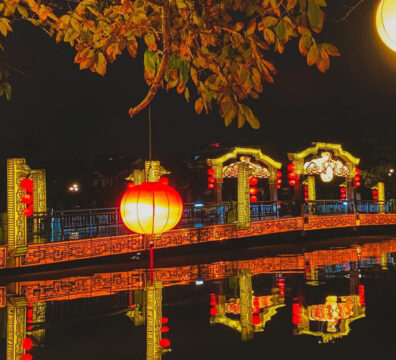

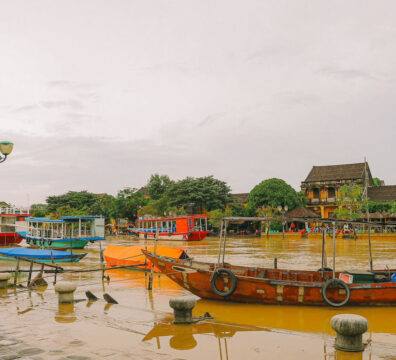

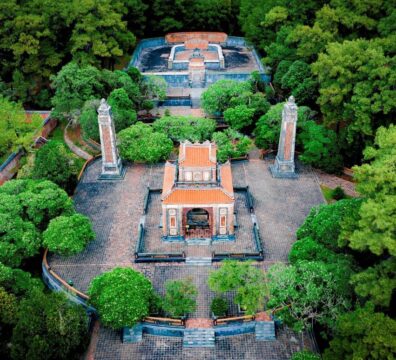



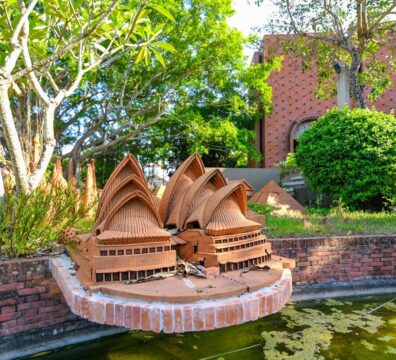




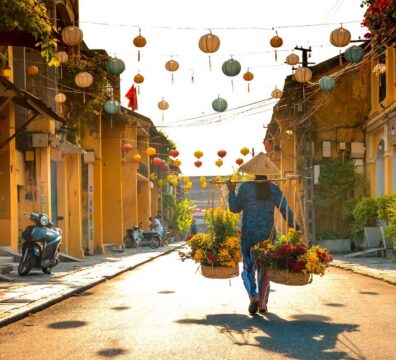


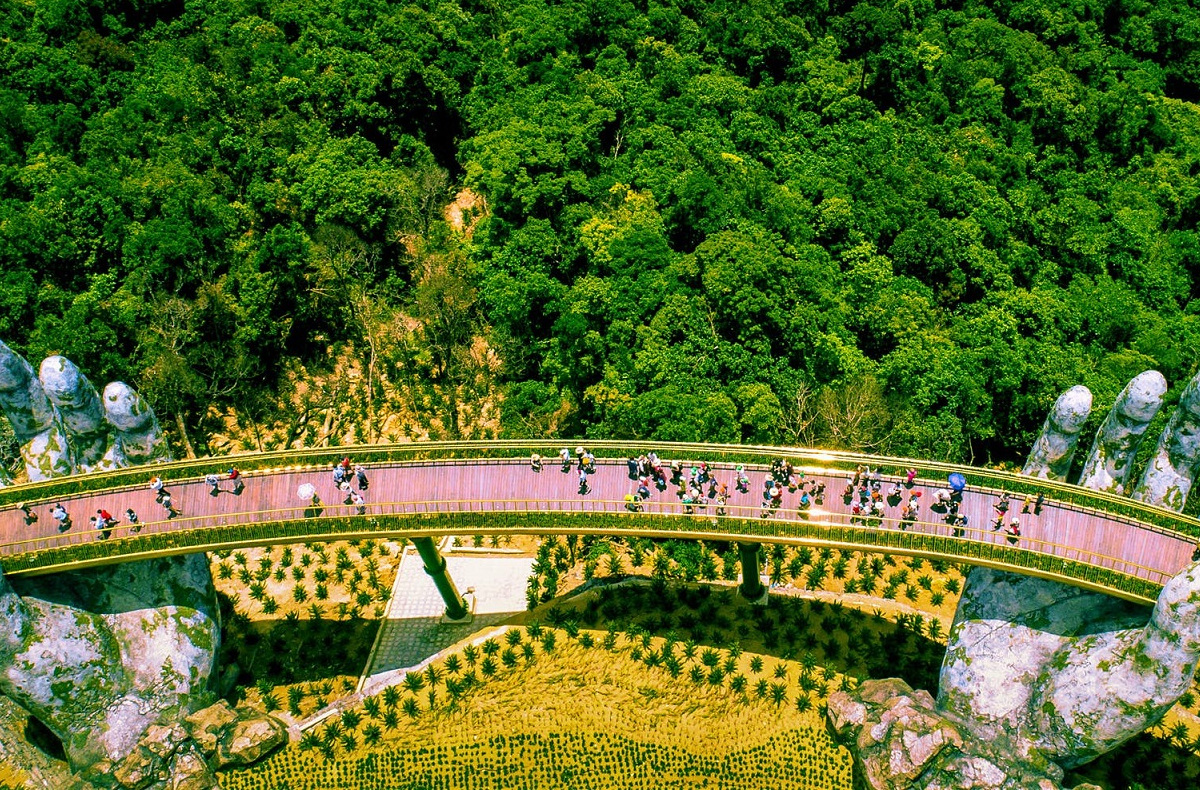

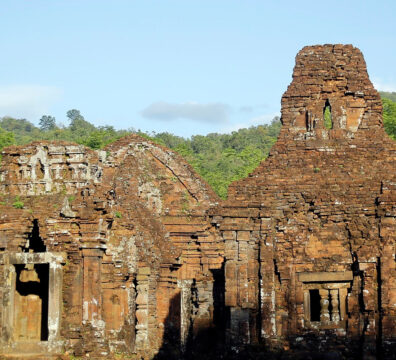


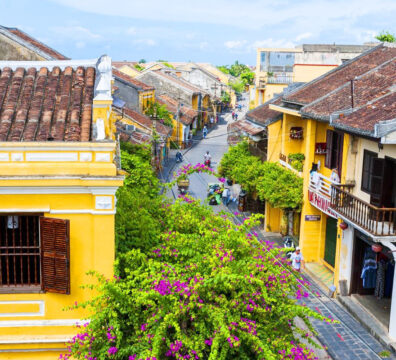


























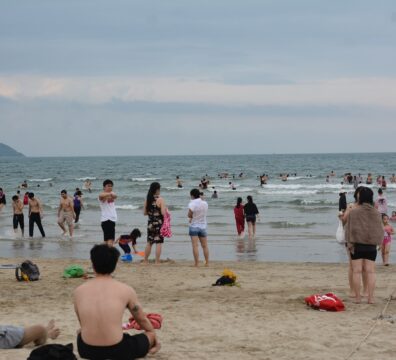

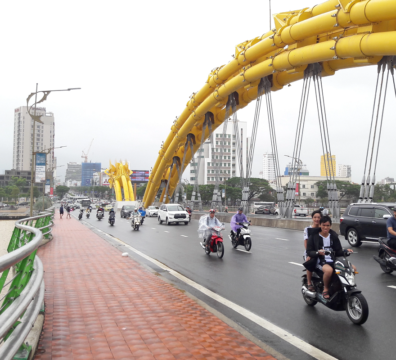









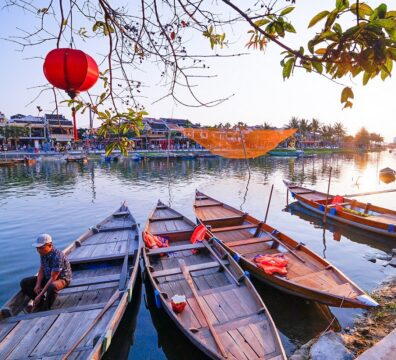


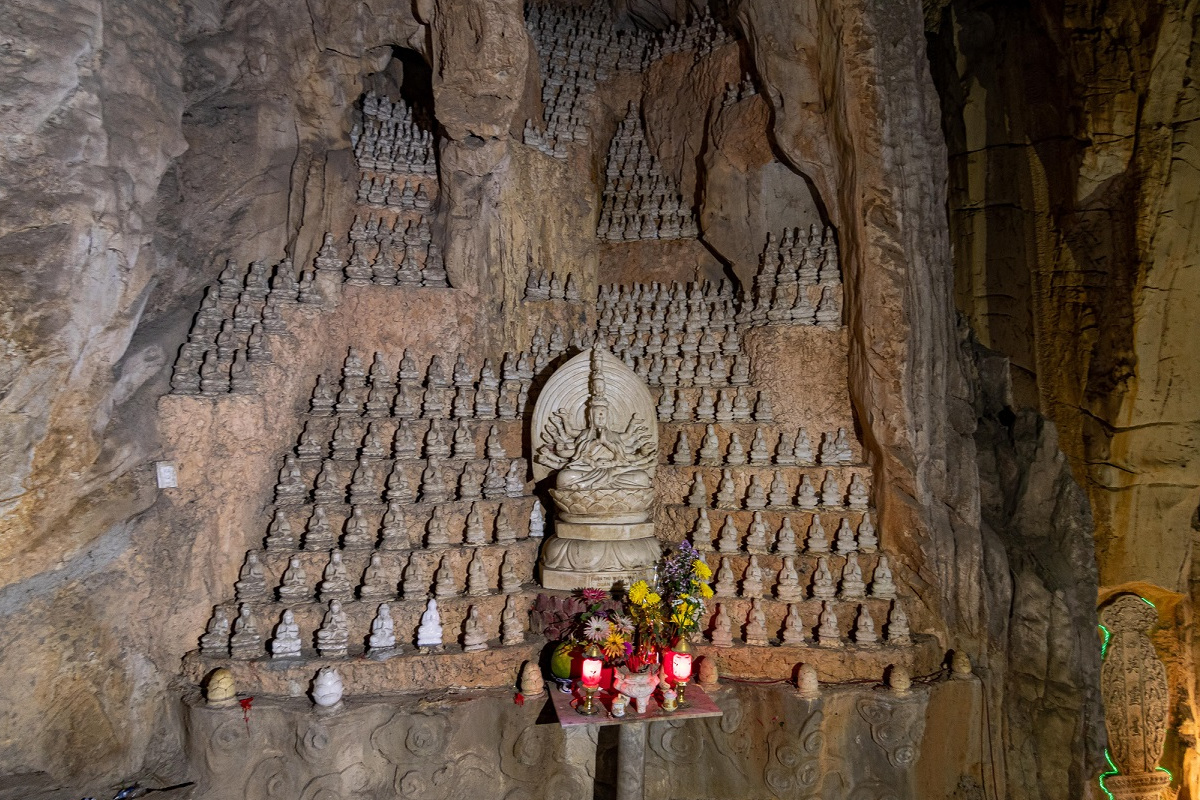






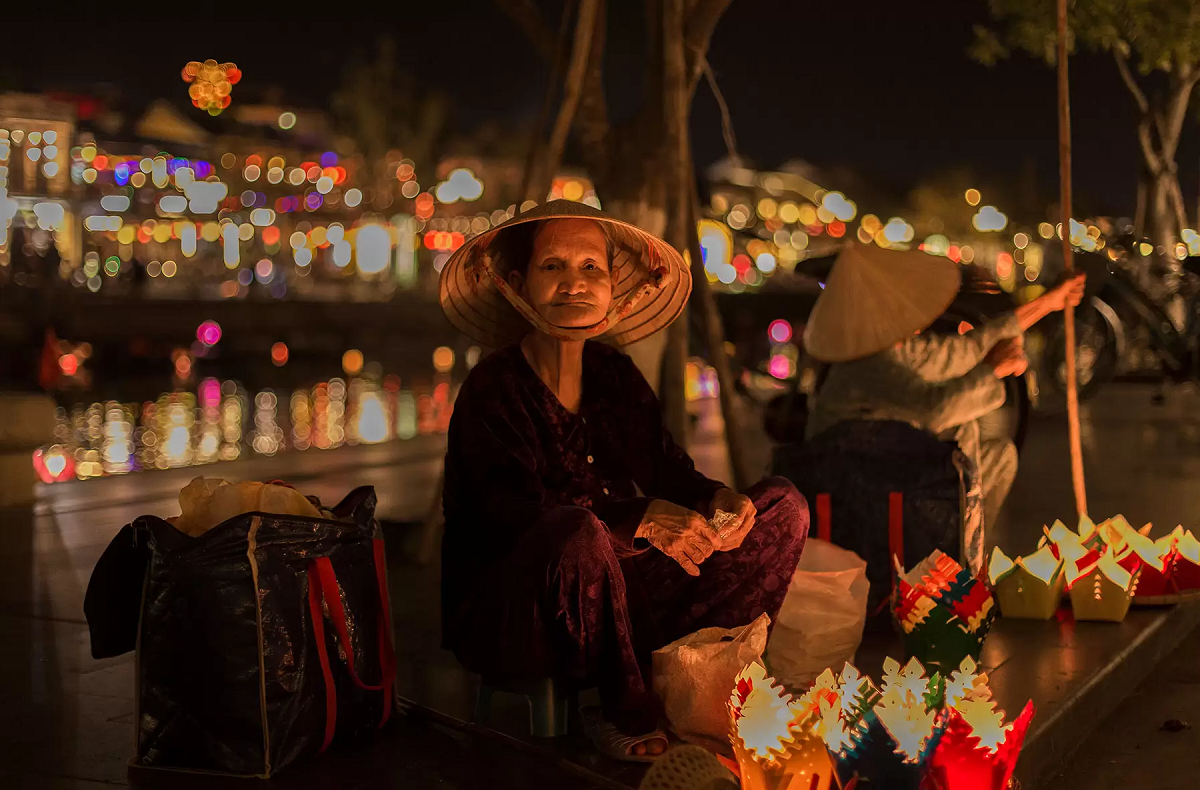











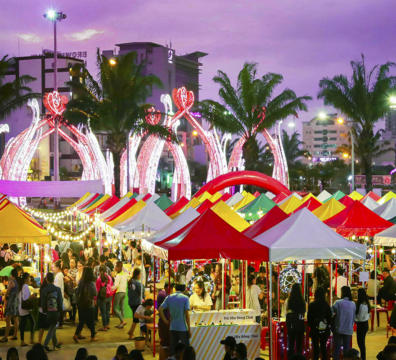








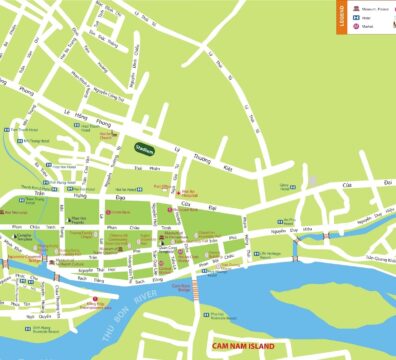

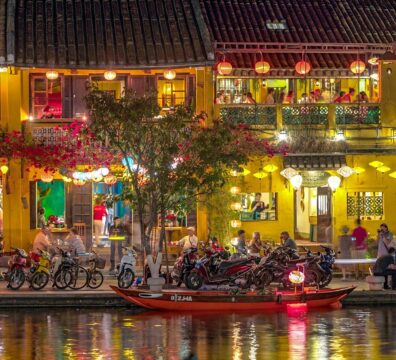



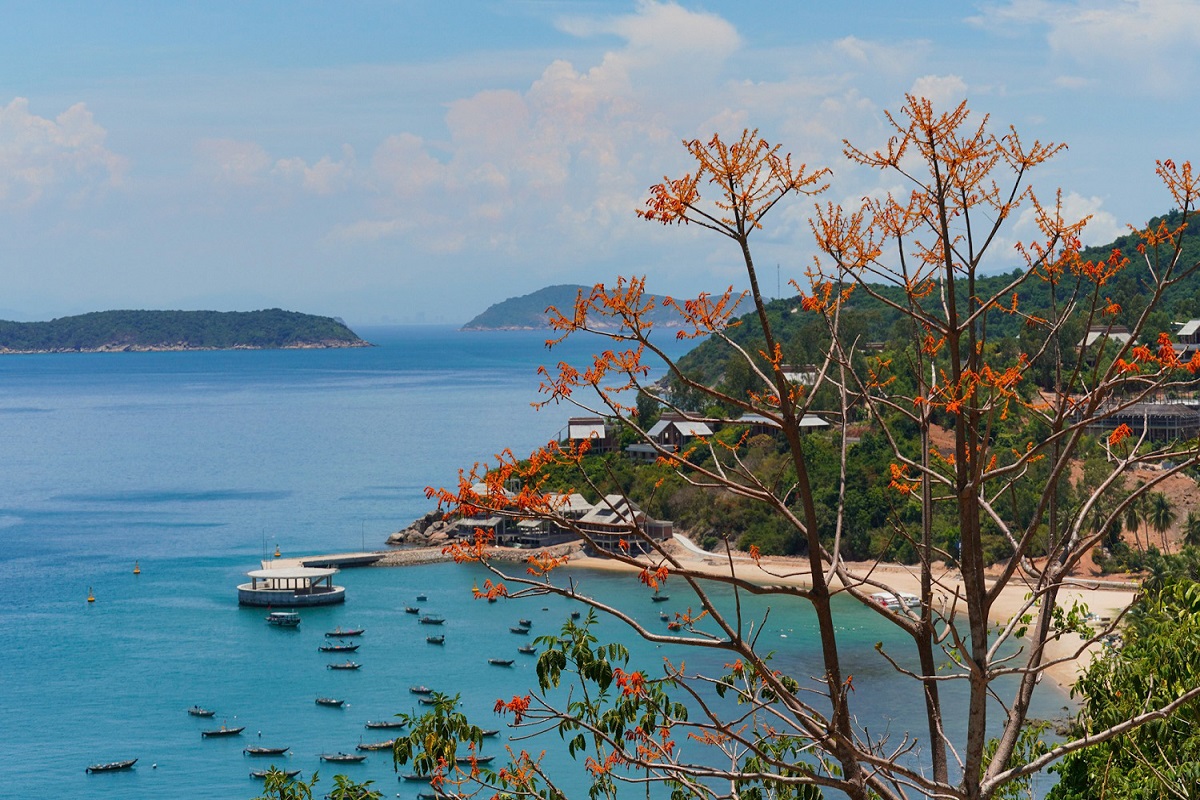









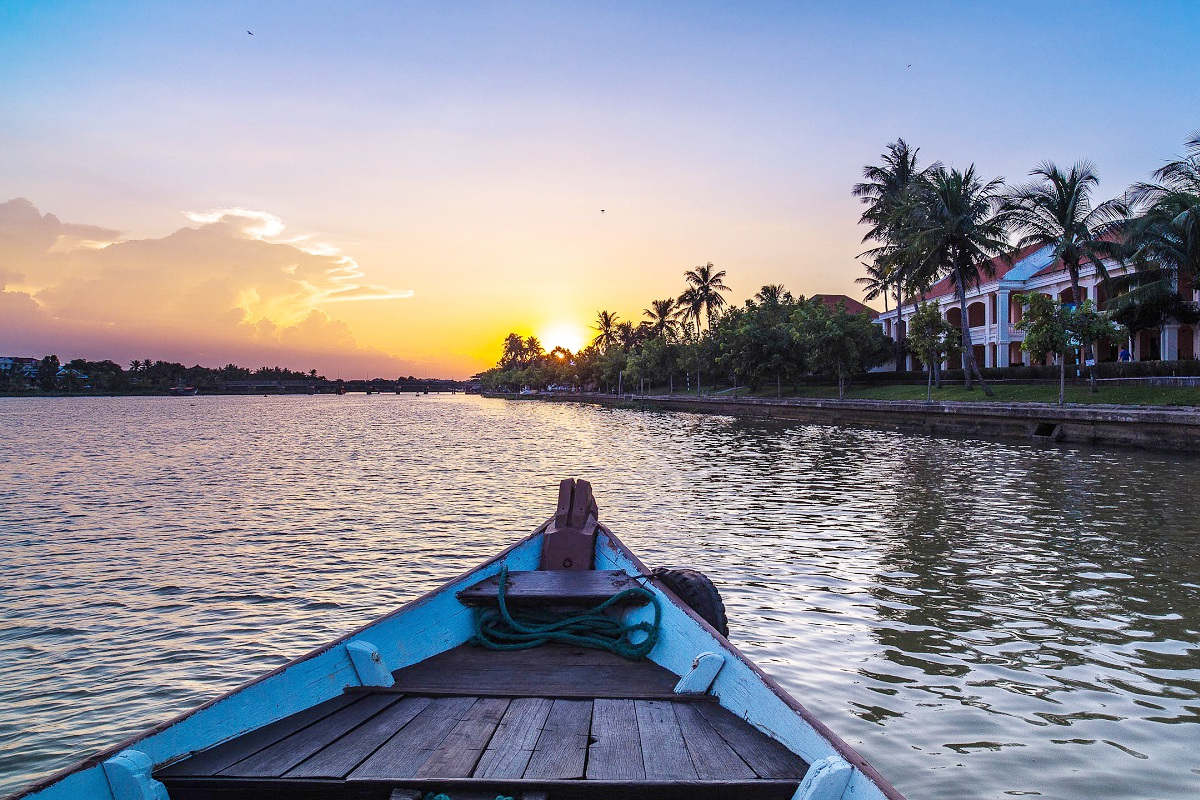





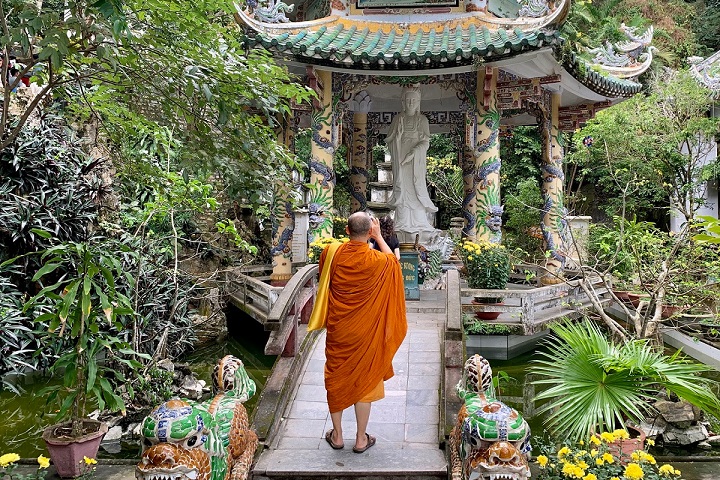














Leave a Reply